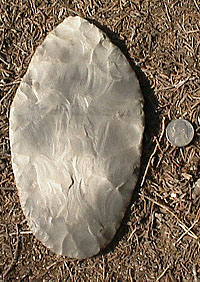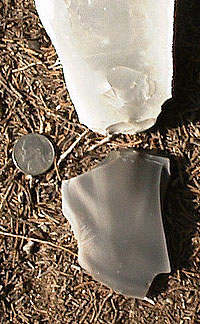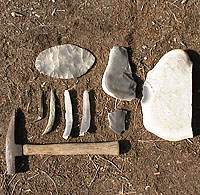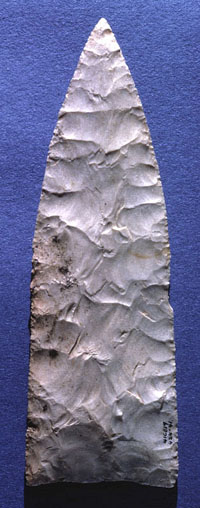Georgetown Flint
Georgetown flint is the name given to an unusually good chert variety that occurs along the eastern fringe of the Edwards Plateau. Modern flintknappers “discovered” a massive, newly exposed source of this world-class material in the early 1970s – the Texas Crushed Stone Quarry south of Georgetown, Texas. In the crushed limestone business, flint was discarded as a nuisance material—too hard to crush. This rejected material proved to be a boon for the budding modern flintknapping community and the word was soon out.
Prehistoric knappers long ago recognized that Georgetown flint was a truly superior material. They must have systematically sought out primary natural exposures and combed through downstream gravel bars in the rivers and streams along the edge of this area of Balcones Escarpment. Numerous artifacts including very large and especially thin bifaces were made from this material, some found at sites hundreds of miles from the source. For instance, several of the large Gahagan knives that were included as Early Caddo grave offerings at the George C. Davis site in Cherokee County in east Texas are made of Georgetown. The material is also known from Clovis caches dating to 11,000 B.C (or earlier) and in archeological contexts dating throughout prehistoric times.
Georgetown flint is a fairly localized material from the Edwards Limestone
formation that occurs in primary context in the only in Williamson County
and probably in southern Bell County. There is, however, a very similar
material found in limestone quarries in Hays County that knappers regard
as a ‘close cousin’ to Georgetown flint.
Georgetown comes in several shades of gray, with four distinct 'flavors'
present in the TCS quarry. The best of these is a 'steel' gray that is glassy,
translucent, brittle, and rivals any natural siliceous stone in North America
in flaking quality. In this quarry, flint occurs in three forms: 1) as
ledge flint, in seams or bands approx. 4 to 20 centimeters thick, 2) as bands
of discontinuous thin, flat cobbles (4 - 10 centimeters thick—perfect for
making bifaces), and 3) as rounded nodules up to about 30 centimeters in diameter.
Some Georgetown flint can be improved by heat treating, but the best material
is perfect for knapping just the way it is.
![]()



